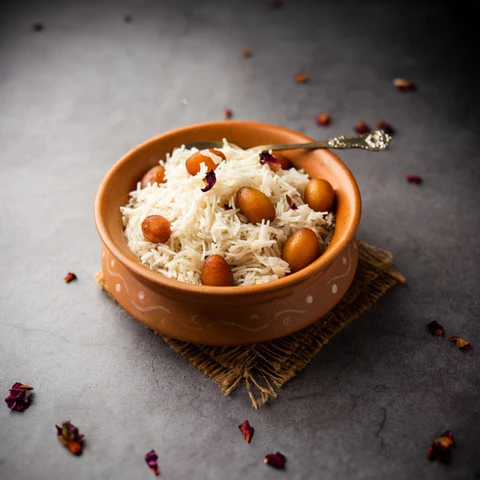Meetha Mania: Sitabhog, the Sweet Symphony from Bengal!
Namaste, and aadaab my food-loving friends! Chef Curry Do-Pyaza here, back in your kitchens with another recipe that’s sure to tantalize your taste buds and leave you craving more. Today, we’re diving deep into the sweet heart of Bengal with a dish called Sitabhog. It’s a dessert so delightful, so melt-in-your-mouth amazing, it’ll have you saying “kya baat hai!” with every bite.
Sitabhog isn’t just a sweet; it’s an emotion, a tradition, a burst of sugary joy.
When Do We Eat This Sweetness?
Think of Sitabhog as the star of celebrations. It shines brightly during Durga Puja, the grandest festival in Bengal, where families come together, and sweets are shared with immense love. You’ll also find it gracing tables during weddings, birthdays, and any other occasion where happiness needs an extra sprinkle of sweetness. It is often enjoyed during the cooler months, especially around Diwali, when everyone is in the mood for festive treats.
A Little History Lesson (with a Spoonful of Sugar!)
Legend has it that Sitabhog originated in Bardhaman, West Bengal. It is believed that a sweet maker created this dish to impress a visiting dignitary. The name “Sitabhog” translates to “food for Sita,” hinting at its pure and delightful nature. Over time, it became a beloved sweet, passed down through generations, each family adding their own special touch.
Ready to Cook? Let’s Get Started!
This recipe is easier than you think. Don’t be intimidated! I’ll guide you every step of the way.
Preparation Time: 15 minutes
Cooking Time: 30 minutes
Ingredients – The Magic Makers:
- 200 grams Gobindo Bhog Rice (Aromatic Short-Grain Rice)
- 1 liter Full Cream Milk (Dudh)
- 200 grams Sugar (Cheeni)
- 1/4 teaspoon Cardamom Powder (Elaichi Powder)
- A pinch of Saffron Strands (Kesar), soaked in 2 tablespoons of warm milk (optional, but adds a beautiful color and aroma)
- 1 tablespoon Ghee (Clarified Butter)
- A handful of chopped Cashews (Kaju) and Raisins (Kishmish) for garnish
Let’s Cook Some Magic!
- Rice is Nice: Wash the Gobindo Bhog rice thoroughly until the water runs clear. This removes excess starch and ensures a fluffy Sitabhog.
- Milky Way: In a large, heavy-bottomed pot or pan, bring the milk to a boil. Once boiling, reduce the heat to low and gently add the washed rice.
- Slow and Steady: Let the rice cook in the milk over low heat, stirring occasionally, for about 20-25 minutes, or until the rice is cooked and the milk has thickened. Keep a close eye to prevent it from sticking to the bottom.
- Sweet Surrender: Add the sugar and cardamom powder to the pot. Stir well until the sugar is completely dissolved.
- Saffron Splash (Optional): If using, add the saffron-infused milk to the mixture. This will give your Sitabhog a beautiful golden hue and a delicate aroma.
- Ghee Goodness: Stir in the ghee. This adds richness and a lovely shine to the sweet.
- Simmer Down: Continue to simmer the mixture for another 5-10 minutes, stirring constantly, until it reaches a thick, porridge-like consistency.
- Garnish and Glory: Remove from heat and garnish with chopped cashews and raisins.
Chef Curry’s Top Tips for a Perfect Sitabhog:
- Quality Rice Matters: Using Gobindo Bhog rice is key to achieving the authentic flavor and texture of Sitabhog. If you can’t find it, you can substitute it with other aromatic short-grain rice.
- Low and Slow Cooking: Cooking the rice over low heat is essential for a creamy and evenly cooked Sitabhog. Patience is your best friend here!
- Stir, Stir, Stir: Constant stirring prevents the rice from sticking to the bottom of the pot and ensures even cooking.
- Adjust Sweetness: Feel free to adjust the amount of sugar to your liking. Some like it sweeter, some prefer a more subtle sweetness.
- Don’t Overcook: Be careful not to overcook the Sitabhog, as it will become too dry. It should have a thick, porridge-like consistency.
Cooking it Your Way:
- Gas Stove: Follow the instructions above for a classic stovetop Sitabhog.
- Induction Stove: Use a medium-low heat setting on your induction cooktop.
- Pressure Cooker (Not Recommended): While possible, it’s difficult to control the texture in a pressure cooker. I advise against it.
- Oven (Not Recommended): Oven baking is not suited for this recipe.
- Microwave (Not Recommended): The microwave is not ideal for achieving the desired creamy texture.
- Slow Cooker/Crockpot (Not Recommended): Slow cookers aren’t ideal for this recipe.
- Air Fryer (Not Recommended): Air fryers are not suited for this recipe.
Nutritional Information (Approximate per serving):
- Calories: 250-300
- Protein: 5-7 grams
- Carbohydrates: 40-50 grams
- Fat: 8-10 grams
Note: Nutritional information is an estimate and may vary based on specific ingredients and portion sizes.
Serving Suggestions:
Serve Sitabhog warm or at room temperature. It’s delicious on its own, but you can also pair it with:
- A dollop of fresh cream or yogurt
- A sprinkle of chopped nuts
- A side of Rasgulla or other Bengali sweets
Now it’s Your Turn!
Go ahead, my friends! Try this simple yet amazing recipe at home. Share it with your family and friends. Let them experience the magic of Sitabhog. I promise, they’ll thank you for it!
Until next time, happy cooking!
Chef Curry Do-Pyaza signing off!
